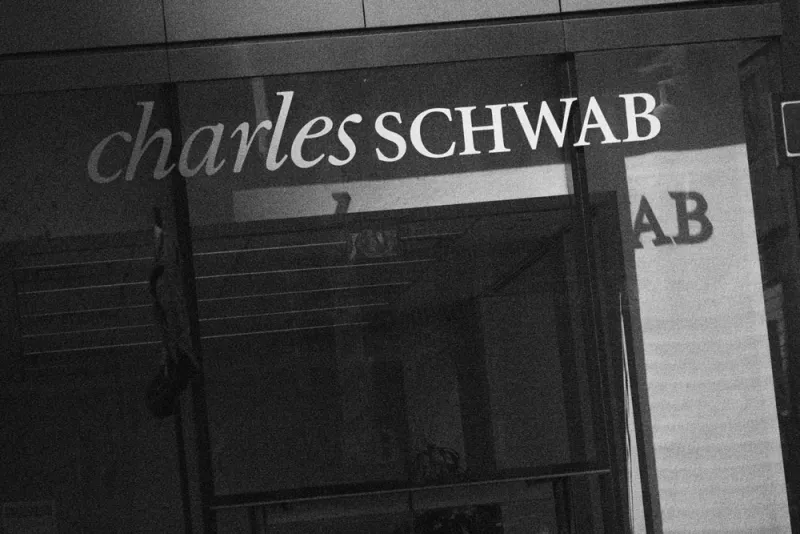The pandemic and resulting economic meltdown led to historic trading activity at Charles Schwab but profit fell, revenue withered, and expenses rose in a strenuous first quarter.
“Daily life as we’ve known it has been upended,” Charles Schwab CEO Walt Bettinger wrote in the company’s earnings report.
As the number of novel coronavirus cases increased, borders and business were ordered to close and the fastest-ever bear market followed. Meanwhile, investors traded like never before, to Schwab’s benefit. The first three months of the year included 27 of the 30 highest single-day trading volume days in Schwab’s history. Average daily trades in March surged 217% year-over-year. There was a peak of four million trades March 12.
Investors opened a record 609,000 new brokerage accounts at Schwab in the first quarter, including more than 280,000 in March. The total number of accounts at the end of the quarter was 12.7 million, up 8% from March of 2019. Core net new assets of $73.2 billion during the first quarter, up 42% year-over-year, also set a record.
But the increased number of trades didn’t offset the impact of Schwab’s decision to eliminate commissions last fall. Trading revenue, which the brokerage now includes in order flow revenue, fell 13% to $188 million compared to the same period last year.
“This decline stems from our October 2019 pricing actions, partially offset by the dramatic increase in transactions,” Peter Crawford, chief financial officer at Schwab, said.
The fall in trading revenue did not drag down performance alone. The discount brokerage reported a quarterly profit of $795 million, or $0.58 per share, down 18% from $964 million a year ago. Analysts surveyed by FactSet expected earnings of $0.68 per share. Revenue also fell, although not as sharply, to $2.61 billion from $2.72 billion.
The Federal Reserve’s emergency rate cut March 15, which lowered the federal funds rate by a full percentage point to near zero, harmed companies like Schwab, where about 60% of total revenue was tied to interest rates at the end of 2019. “With both short- and long-term interest rates having significantly fallen, there’s no maneuvering that the firms can undertake to prevent a material decline in interest-rate related revenue,” Michael Wong, a sector director at Morningstar, said last month.
Pressure across the yield curve “outweighed the impact of significantly higher levels of client cash sweep balances” and caused net interest revenue to decline 6% year-over-year to $1.6 billion, according to Crawford. The cash balances come from the accounts of both retail investors and those from wealth management firms. Schwab is a custodian to more than 7,500 RIAs. Across its businesses, Schwab has $3.5 trillion in client assets.
That wasn’t all that bogged down Schwab’s performance in the first quarter. “Alongside this evolving revenue picture, our spending was impacted by the extraordinary environment,” Crawford said.
Schwab has incurred millions of dollars in expenses to support its business and employees during the pandemic and keep acquisitions on track. (Schwab says 95% of its employees are working from home). Total expenses of $1.6 billion were up 8% year-over-year and included $27 million it used to pay each employee $1,000 to help them through the pandemic. It also paid $37 million in expenses relating to pending acquisitions of USAA Investment Management, TD Ameritrade, and Wasmer Schroeder, a fixed income manager.
On a day when the S&P 500 declined 2.2%, shares of Schwab (ticker: SCHW) fell 4.3%, in line with other financial stocks, to $34.67.
CFRA lowered its price-target on Schwab stock from $55 to 40 and UBS cut its target from $51 to $39.
However, the report included some bright spots. Asset management and administration fees — Schwab’s second-biggest source of revenue, by far — brought in $827 million in the first quarter, up from $755 million a year ago. Executives also said Schwab had a “strong” 40% pre-tax profit margin and will continue to invest with long-term growth in mind.
Clients leaned more heavily on Schwab for help to get them through the first quarter and the company managed that well, according to executives. Client interactions across the web, mobile, chat, and messaging increased between 28% to 80% and culminated to over 190 million more compared to last year, and Schwab was able to manage that with essentially the same headcount.
In February, after 18 months of research and listening to 2.5 million phone calls form RIAs, Schwab Advisor Services revealed it had overhauled its service model with the help of voice recognition software — saving RIAs and its employees considerable time and headaches.
“We’ve been up and running day after day, without significant disruption, as our clients entrusted us with $73.2 billion in core net new assets during the first quarter,” Bettinger said.







